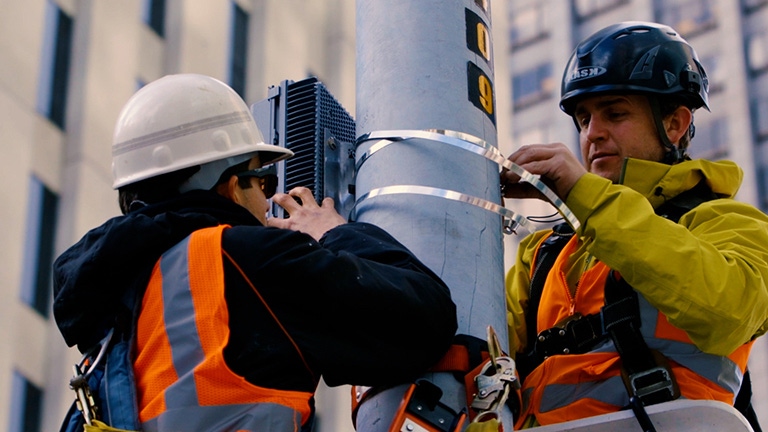
Dodgy fan units. Too many Intel chips. Poor interpersonal relationships. An insincere commitment to open radio access network (RAN) technology. For all the speculation, none appears to be a valid reason for AT&T's industry-shaking decision to evict Nokia from about 50,000 to 60,000 mobile sites – roughly 35% of the AT&T network – and house Ericsson, its other supplier, at them instead. This is, it seems, a single RAN move driven entirely by economics rather than technology.
Of course, AT&T would not give its whole mobile network to a supplier it did not trust and respect on the technology side. The message to analysts asking about the risks of single-vendor dependency (and few seem to be asking) is that Ericsson is now open RAN-compliant, meaning its various bits and bobs can be swapped out for another supplier if it displeases. Open RAN is the label that justifies this arrangement. But swaps aren't cheap. And Ericsson has done nothing to prove it can harmonize with another vendor through open RAN standards in a commercial network while avoiding considerable hassle.
Nor has AT&T identified any other suppliers in the mix that make this look like an open RAN deal. Intel and Dell are named, but their technologies in this context are better categorized as cloud RAN. Intel, moreover, seems to figure increasingly in Ericsson's development of customized chips, much as Marvell does in Nokia's. Fujitsu and Corning, the two other companies on the list, are already believed to provide distributed antenna system technology to AT&T. Ericsson and Fujitsu, moreover, have had a 5G partnership since 2018, long before an open fronthaul standard had been nailed down.
Heavy lifting ahead
The more important thing is that AT&T will now have to replace a huge amount of Nokia kit, almost enough to blanket the whole of the UK three times over. Much of it has not fully depreciated. Indeed, some of the technology appears relatively new. European operators faced with the prospect of enforced Huawei swap-outs grumbled the cost would run to billions of dollars. In Germany, Barclays recently put the cost of replacing Huawei antennas across 95,000 sites at an estimated €2.5 billion (US$2.7 billion). Yet there has been an eerie silence on the cost of ditching Nokia equipment used by AT&T – just a reference to the $14 billion headline value of the five-year Ericsson contract.
Even so, one estimate shared with this publication puts swap-out costs at about $10 billion, including between $6 billion and $7 billion on replacement equipment and related service charges (with the rest spent on Nokia write-offs and meeting contractual obligations with the Finnish supplier). AT&T boss John Stankey, though, has already justified this move to the investment community on pricing grounds ("more efficiency on a unit level" is how he puts it). And a single RAN deal on these $10 billion terms would be madness, even for a company that wasted at least $40 billion on a takeover of Time Warner.
Which means Ericsson foots the bill. Which, by implication, means Ericsson's other customers are paying for it. This is pure conjecture, of course. But it is hard to rationalize it in any other way, even if you buy into AT&T's pitch about open RAN. In fact, the analyst association of open RAN with cost savings will put AT&T under even more pressure to show it is spending less in future.
Adding plausibility and intrigue to all this are the online rumors that first surfaced weeks before AT&T's deal with Ericsson was announced. "Ericsson will be the single OEM [original equipment maker]," said one contributor to thelayoff.com, a chat site that seems to be used by AT&T employees, nearly three weeks ago. "Any truth that all RAN work including design, optimization and performance is going to be done by Ericsson and local market engineers will all be laid off?" the anonymous person then asked.
This kicks off further speculation on the same page about an outsourcing aspect of the deal, whereby Ericsson absorbs AT&T employees into its own workforce. The commenters were obviously right that Ericsson would become "the single OEM," implying there is some knowledge within this community of the arrangement's contractual details.
Outsourcing would clearly reduce operational costs for AT&T and increase them for Ericsson. That would probably suit Stankey, who has cut AT&T's headcount by more than 90,000 jobs since taking over as CEO in July 2020. But it would hardly support the plan Ericsson announced in February to cut 8,500 jobs. Its workforce shrank by just 4,178 employees between December 2022 and September.
The truth will out
If this publication's conjecture proves to be the truth, it will eventually out, as they say, in Ericsson's financial updates, like a $3 billion impairment charge on a $6.2 billion takeover of Vonage. That would potentially devastate Ericsson's mid-term profitability. The question, then, is why the Swedish company would do it. One reason might be that Ericsson believes it can raise the prices for an AT&T wholly dependent on it in future. The more Machiavellian types may surmise that Ericsson thinks it can weaken Nokia to the point where the rival equipment maker is no longer competitive.
All this makes the blather about open RAN sound even more bizarre. The concept is supposed to boost competition by allowing the suppliers of different components to pair up more easily at the same mobile site. This would aid specialists, said operators when the O-RAN Alliance, the specifications group led by AT&T and four other telcos, was formed in 2018. Yet AT&T is moving to a single RAN built by the world's biggest 5G vendor outside China. And the number-two player is reeling.
Weeks ago, Nokia announced plans to cut between 9,000 and 14,000 jobs, between 10.5% and 16.3% of the current total. After AT&T's move, cuts may be at the higher end of the scale, with Nokia admitting yesterday that it will need an extra two years to achieve its target of a double-digit operating margin. Its share price has plummeted in recent days and its market cap is now just $16.6 billion, down from $35 billion in early 2022. That has fueled speculation it may become a takeover target or face break-up. But for any prospective buyer, this week's developments show what a dangerous place the RAN market is.
Read more about:
HeadcountAbout the Author(s)
You May Also Like




.jpg?width=300&auto=webp&quality=80&disable=upscale)







